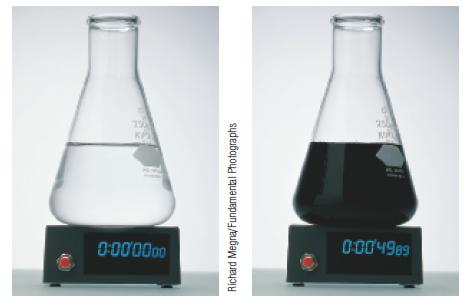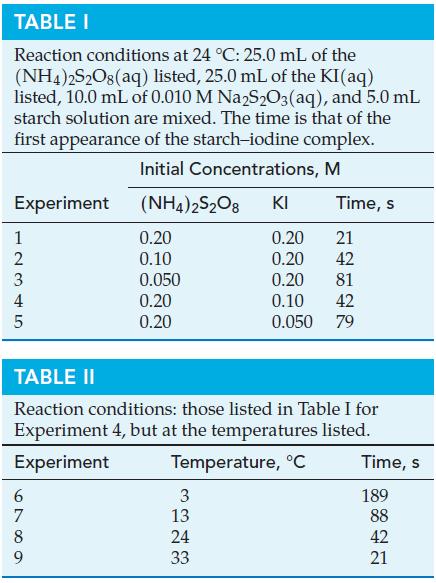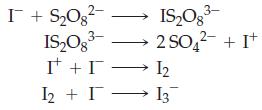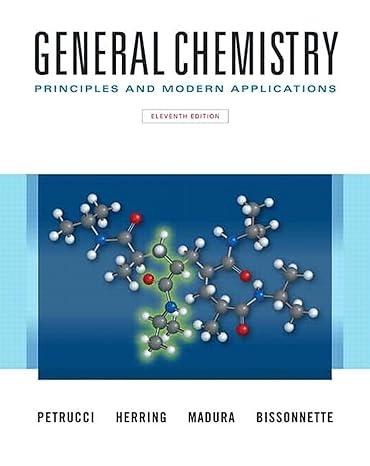The object is to study the kinetics of the reaction between peroxodisulfate and iodide ions. The I
Question:
The object is to study the kinetics of the reaction between peroxodisulfate and iodide ions.

The I3‾ formed in reaction (a) is actually a complex of iodine, I2 and iodide ion, I‾. Thiosulfate ion, S2O32‾ also present in the reaction mixture, reacts with I3‾ just as fast as it is formed.
![]() When all of the thiosulfate ion present initially has been consumed by reaction (b), a third reaction occurs between I3‾(aq) and starch, which is also present in the reaction mixture.
When all of the thiosulfate ion present initially has been consumed by reaction (b), a third reaction occurs between I3‾(aq) and starch, which is also present in the reaction mixture.
![]() The rate of reaction (a) is inversely related to the time required for the blue color of the starch–iodine complex to appear. That is, the faster reaction (a) proceeds,
The rate of reaction (a) is inversely related to the time required for the blue color of the starch–iodine complex to appear. That is, the faster reaction (a) proceeds,

the more quickly the thiosulfate ion is consumed in reaction (b), and the sooner the blue color appears in reaction (c). One of the photographs shows the initial colorless solution and an electronic timer set at t = 0; the other photograph shows the very first appearance of the blue complex (after 49.89 s). Tables I and II list some actual student data obtained in this study.

(a) Use the data in Table I to establish the order of reaction (a) with respect to S2O82‾ and to I‾. What is the overall reaction order? How are the times required for the blue complex to appear related to the actual rates of reaction?
(b) Calculate the initial rate of reaction in Experiment 1, expressed in M s‾1. You must take into account the dilution that occurs when the various solutions are mixed, as well as the reaction stoichiometry indicated by equations (a), (b), and (c).
(c) Calculate the value of the rate constant, k, based on experiments 1 and 2.
(d) Calculate the rate constant, k, for the four different temperatures in Table II.
(e) Determine the activation energy, Ea, of the peroxodisulfate–iodide ion reaction.
(f) The following mechanism has been proposed for reaction (a). The first step is slow, and the others are fast.

Show that this mechanism is consistent with both the stoichiometry and the rate law of reaction (a). Explain why it is reasonable to expect the first step in the mechanism to be slower than the others.
Step by Step Answer:

General Chemistry Principles And Modern Applications
ISBN: 9780132931281
11th Edition
Authors: Ralph Petrucci, Jeffry Madura, F. Herring, Carey Bissonnette





